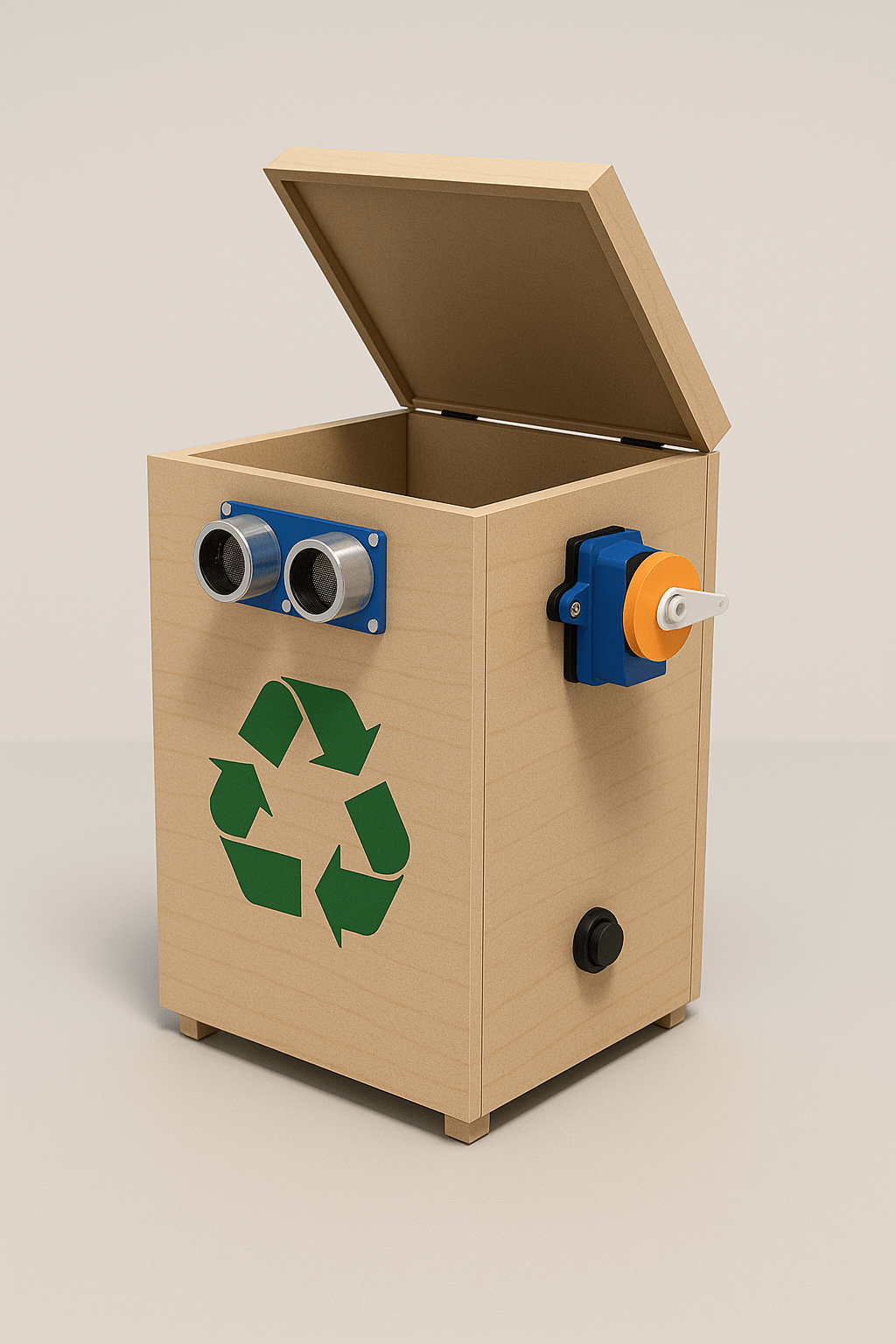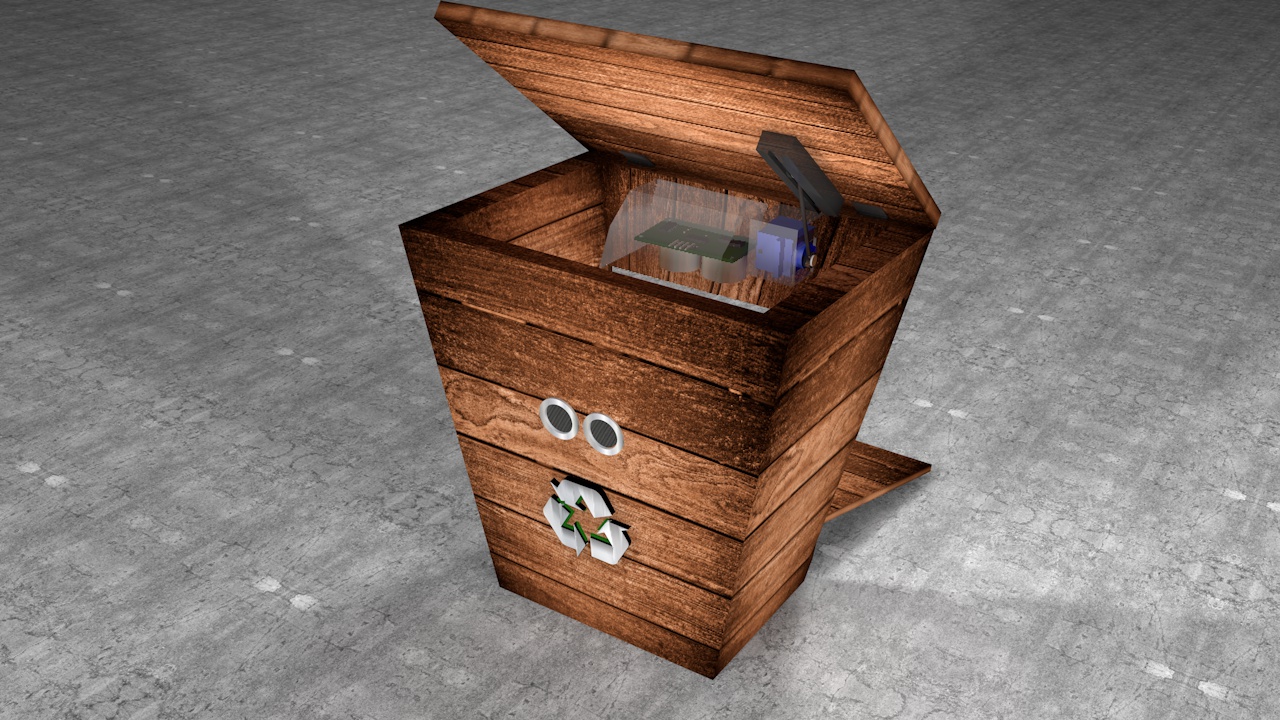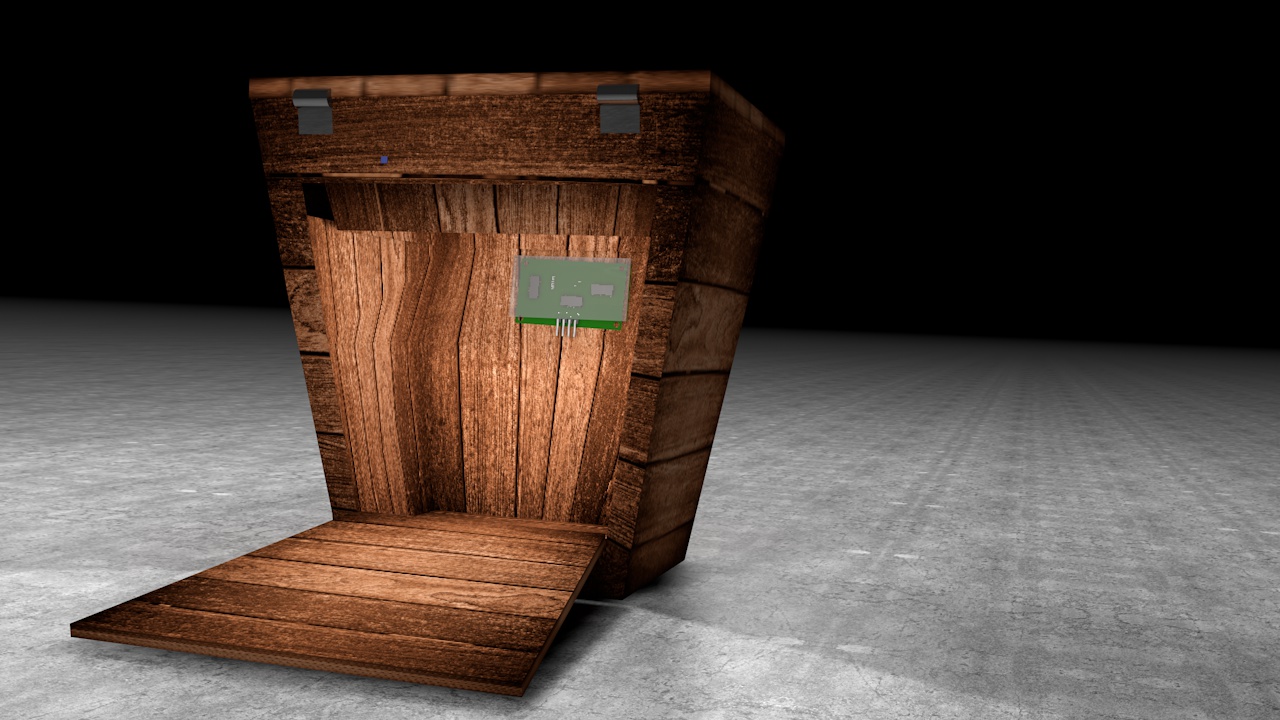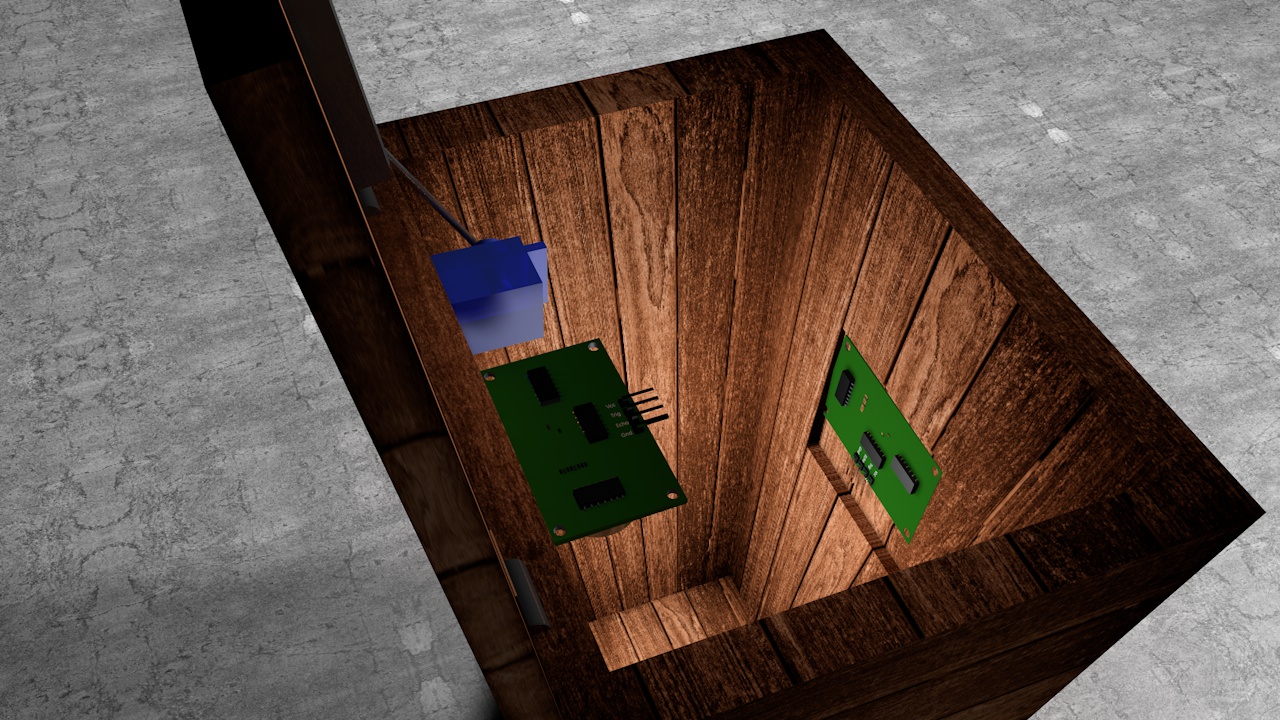Week 12: Mechanical Design
♻️ Smart Paper Recycling Bin

Figure 1: 3D Render of Smart Paper Recycling Bin
Assignment
Design a machine that includes:
- Mechanism
- Actuation
- Automation
- Application
Hardware Fit
- HC-SR04 ultrasonic sensor
- SG90 9G micro servo
- Seeed XIAO RP2040
GOAL
Create a smart paper recycling bin with:
- Mechanism: Hinged lid
- Actuation: Servo motor
- Automation: IR or ultrasonic sensor to detect paper
- Application: Recycles paper
- Manual Use: Push button to open the lid manually
- Theme: Sustainability + Clean Tech
- Goal: Encourage and track proper paper recycling with some mechanical flair.
Project Overview
Objective: Design a smart recycling bin that automatically opens its lid when paper is detected, using sensors and actuators integrated into the mechanical design.
Key Components:
- Mechanism: Hinged lid with servo motor actuation
- Actuation: Servo motor controlled by a microcontroller
- Automation: IR or ultrasonic sensor to detect paper insertion
- Application: Encourages recycling by providing an interactive experience
- Manual Operation: Push button or lever to open the lid manually
Components Breakdown
- Mechanism: Flap-door or sliding gate to open/close bin entry
- Actuation: Servo or stepper motor to open lid or rotate internal separator
- Automation: Sensor detects paper → opens bin automatically → logs usage or compacts contents
- Application: Educational/eco-friendly public space recycling
- Manual Operation: Push button or hand lever if automation is off
Actuation
Actuation in this project is achieved using an SG90 9G micro servo motor. The servo is mounted to the back panel of the bin and is linked to the hinged cardboard lid. When triggered, the servo rotates approximately 90 degrees, lifting the lid to allow paper to be inserted. The servo is powered via 5V and receives control signals from the RP2040 microcontroller using PWM (pulse width modulation).
The servo's motion is smooth and consistent, ideal for lightweight cardboard material. I chose a servo over a DC motor or stepper due to its simplicity, built-in feedback control, and compatibility with small, low-power microcontrollers.
Automation / Detection
The automation system relies on an HC-SR04 ultrasonic sensor mounted on the front panel of the recycling bin. This sensor continuously measures the distance to any object in front of it. When a hand or piece of paper enters the detection range (less than 15cm), the sensor sends a signal to the RP2040 microcontroller.
The microcontroller then triggers the servo to open the lid. This enables a touch-free user experience and reduces the chance of contamination or unnecessary physical contact. The detection threshold and response time were tuned in code for optimal responsiveness.
Application
This smart recycling bin is designed for educational, public, and eco-conscious spaces such as classrooms, libraries, community centers, or maker spaces. It encourages recycling habits through an interactive and automated system that responds to user input with a visible mechanical motion.
The bin can be expanded with features such as a paper compactor, fill-level LED indicator, or a counter to log how many times the bin has been used. The project emphasizes sustainability, automation, and clean design, making it an ideal entry-level example of how machine design and embedded systems can intersect.
Optional Add-Ons
- Compacting roller for flattening paper
- LED to show bin is full
- Sound module to play “thank you” when paper is inserted
- Battery + USB-powered options
- Automation: IR sensor detects hand presence → triggers mechanism
- Application: Health & safety in schools, community centers
- Manual Operation: Push-button or elbow-operated lever for safety



